Choices in the Garden
Memorial Garden? Botanic Garden? Public Park?
The choices that make Ramat Hanadiv so special
 News and Events
News and Events
Memorial Garden? Botanic Garden? Public Park?
The choices that make Ramat Hanadiv so special
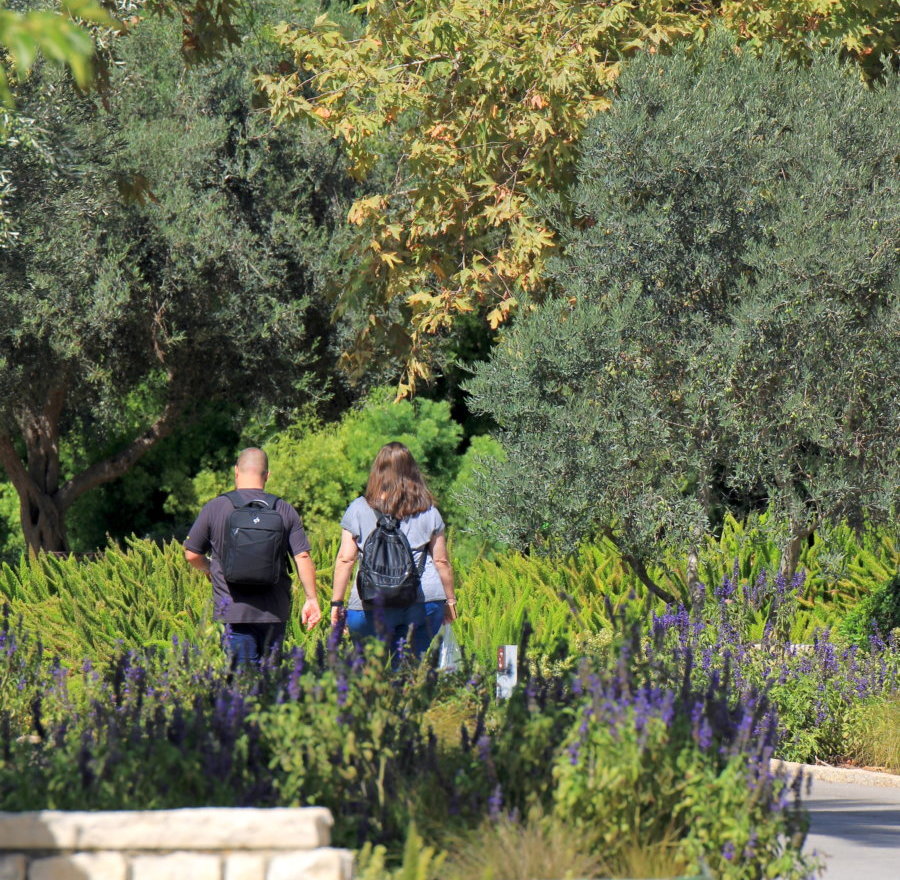
Choosing how to remember
Imagine the words “memorial garden”; we could assume that you’re imagining a large monument, perhaps a sculpture in the image of the deceased, with signs that tell his story. In the Memorial Gardens at Ramat Hanadiv an intentional, conscious choice was made to create a different memorial experience – an experience that may include a visit to the grave but does not depend on it. The gardens in memory of the “known benefactor” do not focus on Baron Rothschild, and during your visit you might miss the sign pointing toward the mausoleum plaza; the memory of his spirit and legacy are summarized through the artistry of the site that acts as source of inspiration. The winding trails will lead you to blooming garden corners; the time you spend there will open your heart and their beauty is a delight to the eyes.
The gates of Ramat Hanadiv opened for the first time in the spring of 1954, on the day that the bones of Baron Edmond (Benjamin) de Rothschild and his wife Adelaide were laid to eternal rest in the burial crypt in the heart of the gardens. Indeed, one of the stations in the garden is the Baron’s grave, which is a beautiful, special plot, but is not located in the middle of the garden.
In these gardens, you won’t see “ride-ons” or bicycles, guides with loudspeakers, or food. These choices were made in order to offer a memorial experience characterised by a feeling of reverence and appreciation, and behaviour that is respectable, pleasant and quiet, but not sad or “heavy”, but rather, living, changing and developing.

The memory of the Baron’s spirit and legacy are summarized through the artistry of the site that acts as source of inspiration.

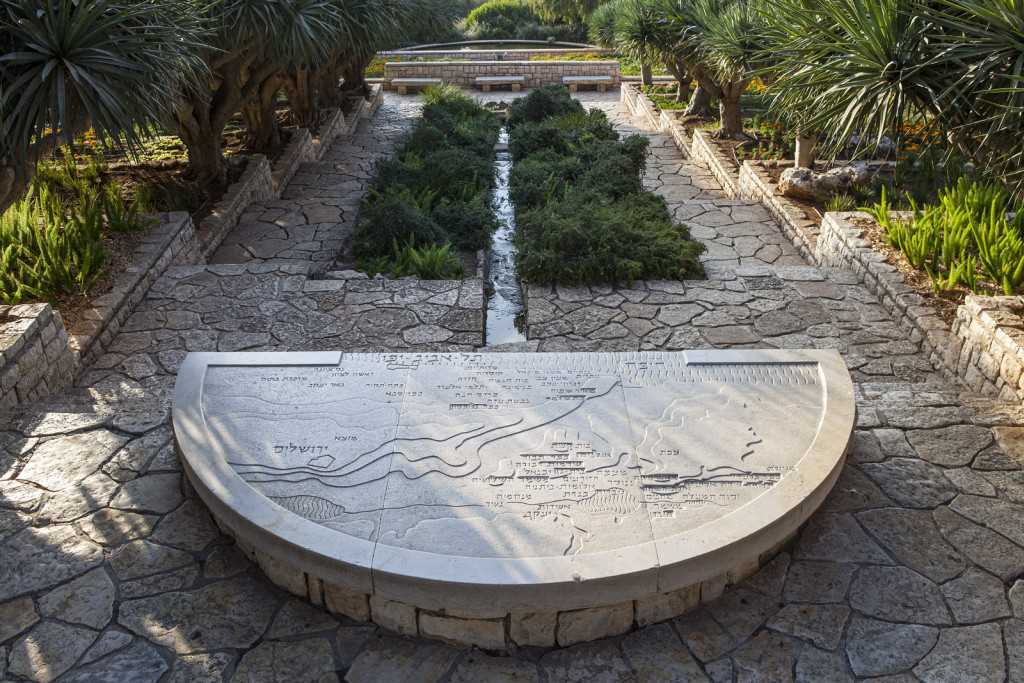
Choosing to preserve
In February 1914, during one of his visits to the Land of Israel, the Baron toured southern Mt. Carmel and expressed his desire to be laid to eternal rest in the “rock”. In November 1934 he passed away, and in 1936, in response to his father’s wish, his son, James de Rothschild, initiated the establishment of the gardens. The mountain, known by its name Umm el-‘Aleq, was chosen as the site on which to establish the gardens, due to its beauty and its location in a region with many villages and settlements supported by the Baron.
Fourteen of the best architects in the land were invited to submit proposals for planning the project, which was supposed to include the following elements: a burial crypt quarried into the rock, built to a high standard to stand the test of time, surrounded by beautiful, aesthetically pleasing gardens that bloom all year round. Architect Uriel (Otto) Schiller won the competition and invited landscape architect Shlomo Weinberg (Oren), a member of Kibbutz Yagur, to join him in choosing the composition of the vegetation to be planted at different locations throughout the garden.

Today, the gardens are almost completely identical to the original plan and very little has changed. The choice to preserve the gardens, their trails and the original plan is based on their historical value

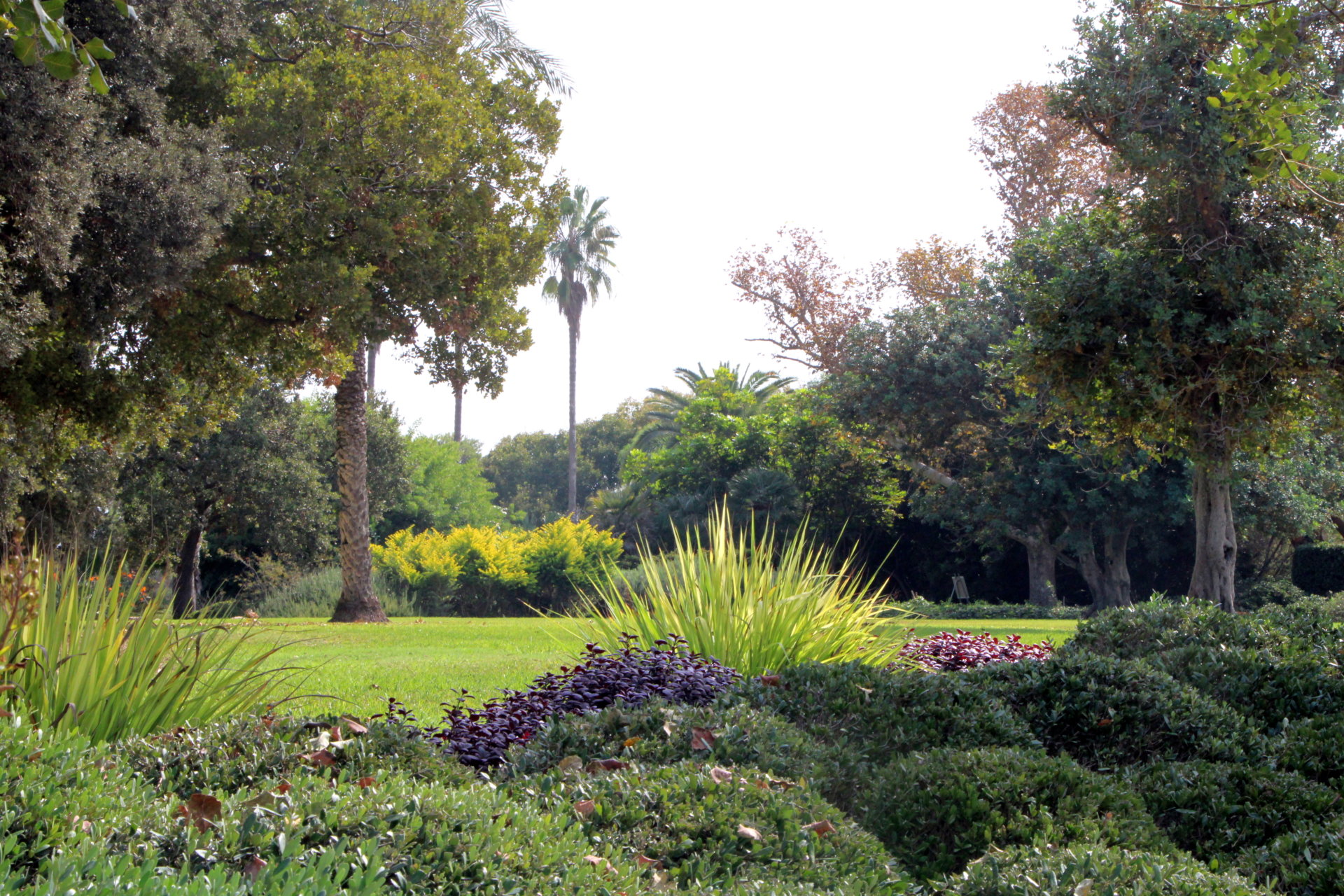
Today, the gardens are almost completely identical to the original plan and very little has changed. The choice to preserve the gardens, their trails and the original plan is based on their historical value. In Israel, which does not have a long history of gardening culture like Europe, and where the Mediterranean gardening approach is still in its early stages, great value can be attached to a garden with old trees, a garden that reflects a gardening approach rooted in the previous century. Thus, the gardens acquire an educational, symbolic value that does not succumb to design “trends” but maintains their classical look; gardens that show restraint and a long-term perspective, and give expression to both the past and the future.
The significance of this in practice is that throughout the gardens, small changes take place according to the times – in the garden beds, the composition of shrubs, the way trees are treated, the irrigation method, and the addition of accessible trails – but in essence they remain as they were.
In contrast, the landscape observed from Ramat Hanadiv has changed: more construction and urban development can be seen from the windows of nature that overlook Zichron Ya’akov, which has expanded, and Hanadiv Valley, which was previously abundant with nature, vineyards and orchards, but now includes roads, industrial zones and expansive homes.

The choice to avoid a sign next to each tree or flower was made to facilitate an authentic experience and an intimate, direct meeting, without barriers or captions, between man and nature

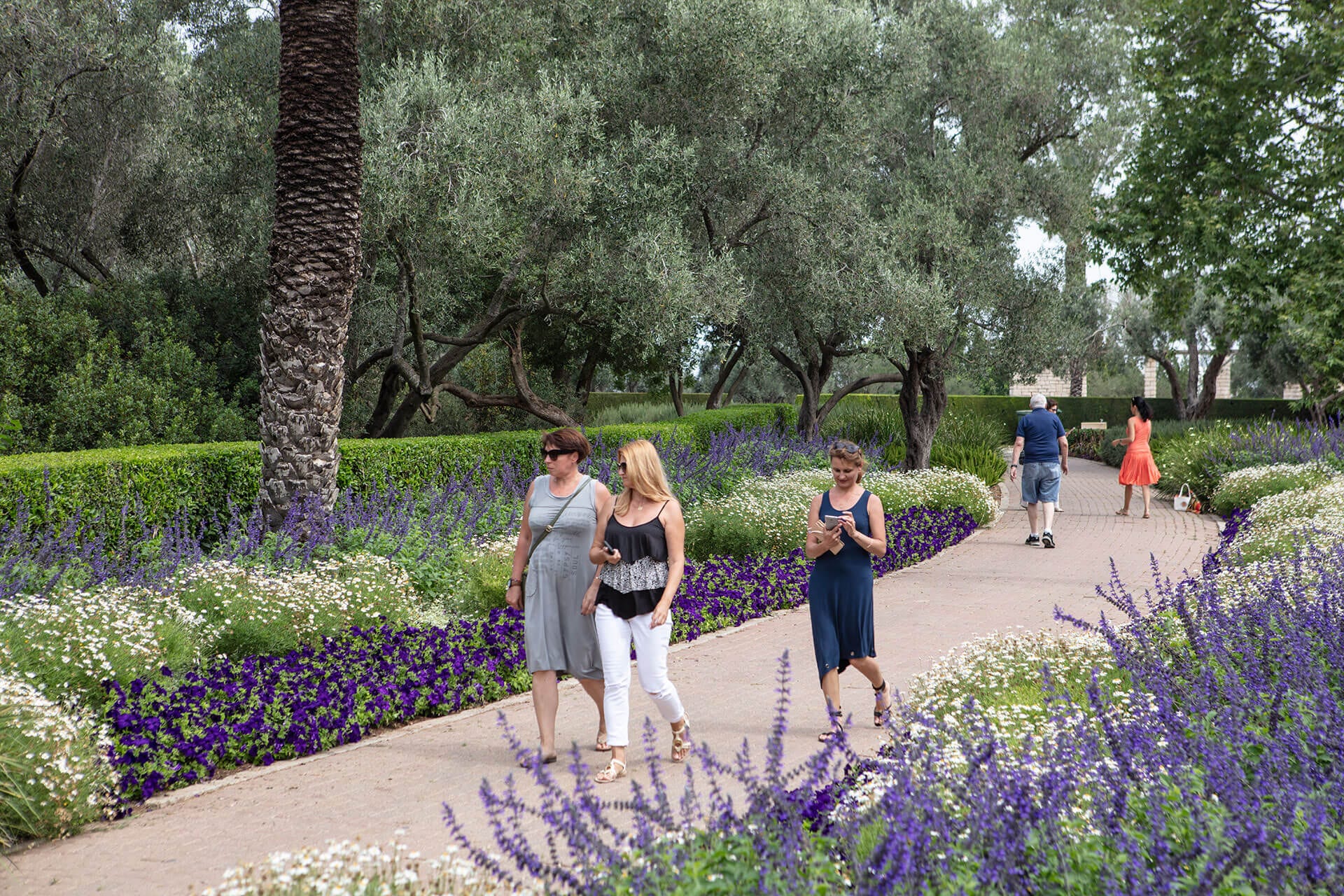
Choosing the experience
The gardens contain over 1,000 trees and 10,000 flowers, but when you stroll through them we can’t guarantee you’ll know their names; there are no little signs or name tags nearby. Is this an advantage or a disadvantage? First and foremost we must clarify that we’re talking about an intentional, conscious choice. Indeed, Ramat Hanadiv is an agency with an exceptional appreciation of knowledge, with a strong focus on research and content, so what is the reason for this choice? This issue has been raised time and again for discourse and discussion. The decision stems from the visitor experience we want to create. The gardens are considered a space that gives the hiker quality time in peace and tranquillity, enjoyment, attention to the sounds of the wind and leaves, breathing the air and beauty. If there was a sign next to each tree or flower, visitors would walk the trails asking themselves: ‘What do I see now?’, ‘What’s the name of this tree?’
The choice to avoid this was made to facilitate an authentic experience and an intimate, direct meeting, without barriers or captions, between man and nature. The assumption is that whoever wants to learn more can use the range of tools and methods at his disposal (the information is accessible on our website of course). A space like this is rare and special, like sitting on the beach and watching the waves, lying in a field of flowers surrounded by nature, or watching the sunset from a mountain top.
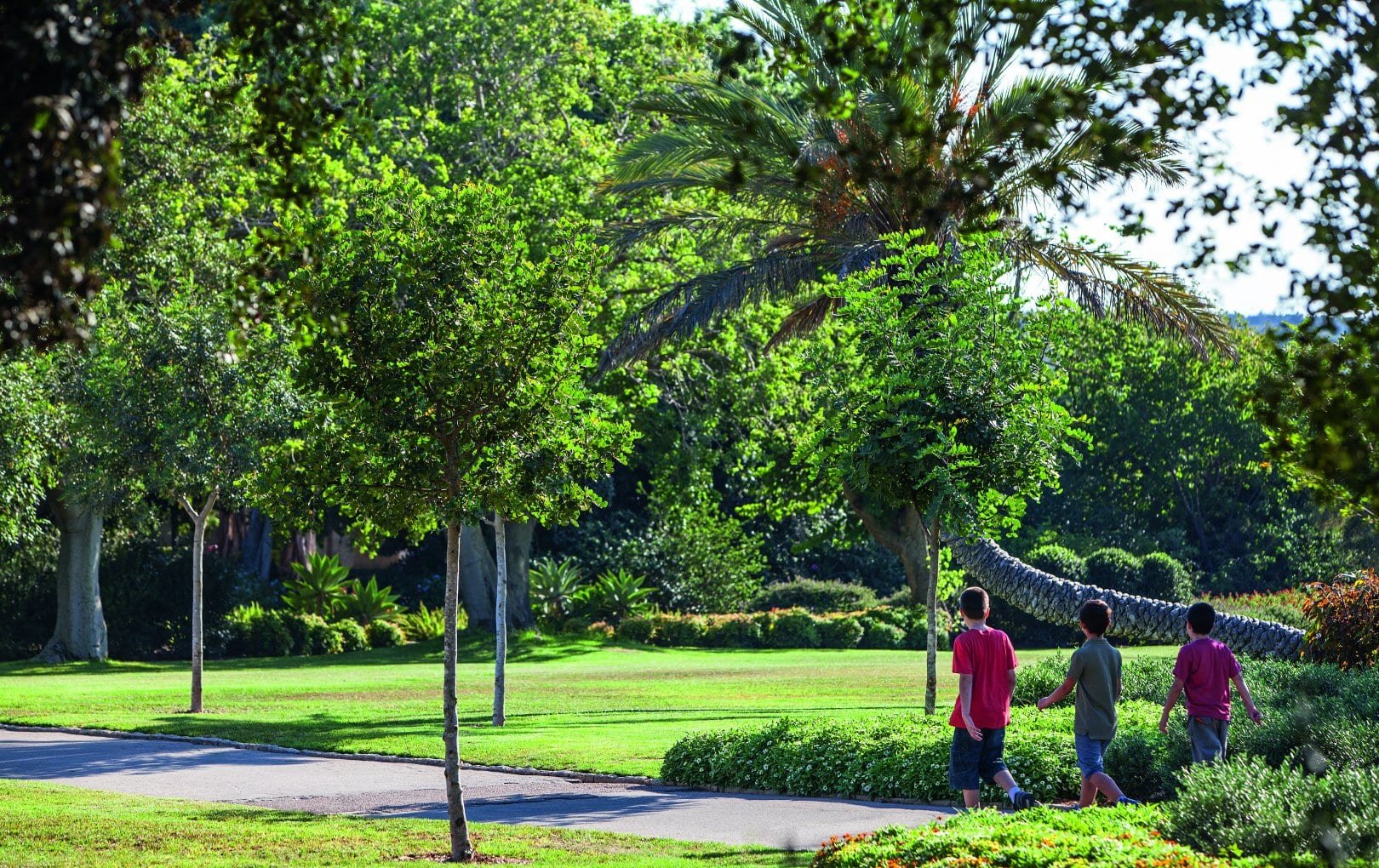
Choosing a drying reality
Some choices have accompanied the gardens from their establishment while others have arisen from the changing reality. Such a dilemma arose about a decade ago, during a drought period, remembered by the campaign ‘Israel is drying up’, when the public was called to action to reduce the use of water and was encouraged to let private lawns dry up. At that time, a question arose at Ramat Hanadiv with respect to the green lawns in the gardens. Since they were considered important for the pubic, particularly during times of drought – a “green island” to escape to when the gardens around are drying up – we decided to continue maintaining them. However, the need for a source of irrigation not based on drinking water was very clear; this understanding led Ramat Hanadiv to a significant change in our approach to irrigation, and a transition to irrigating the gardens with non-potable water, which to date is the main source of irrigation water at Ramat Hanadiv.

‘It feels like being abroad’ – no conscious choice was made to create this feeling. It seems to have developed with time: from a great love of nature and vegetation, by virtue of the professional training in very meticulous gardening practices and thanks to a great appreciation for aesthetics and for the experience it creates.

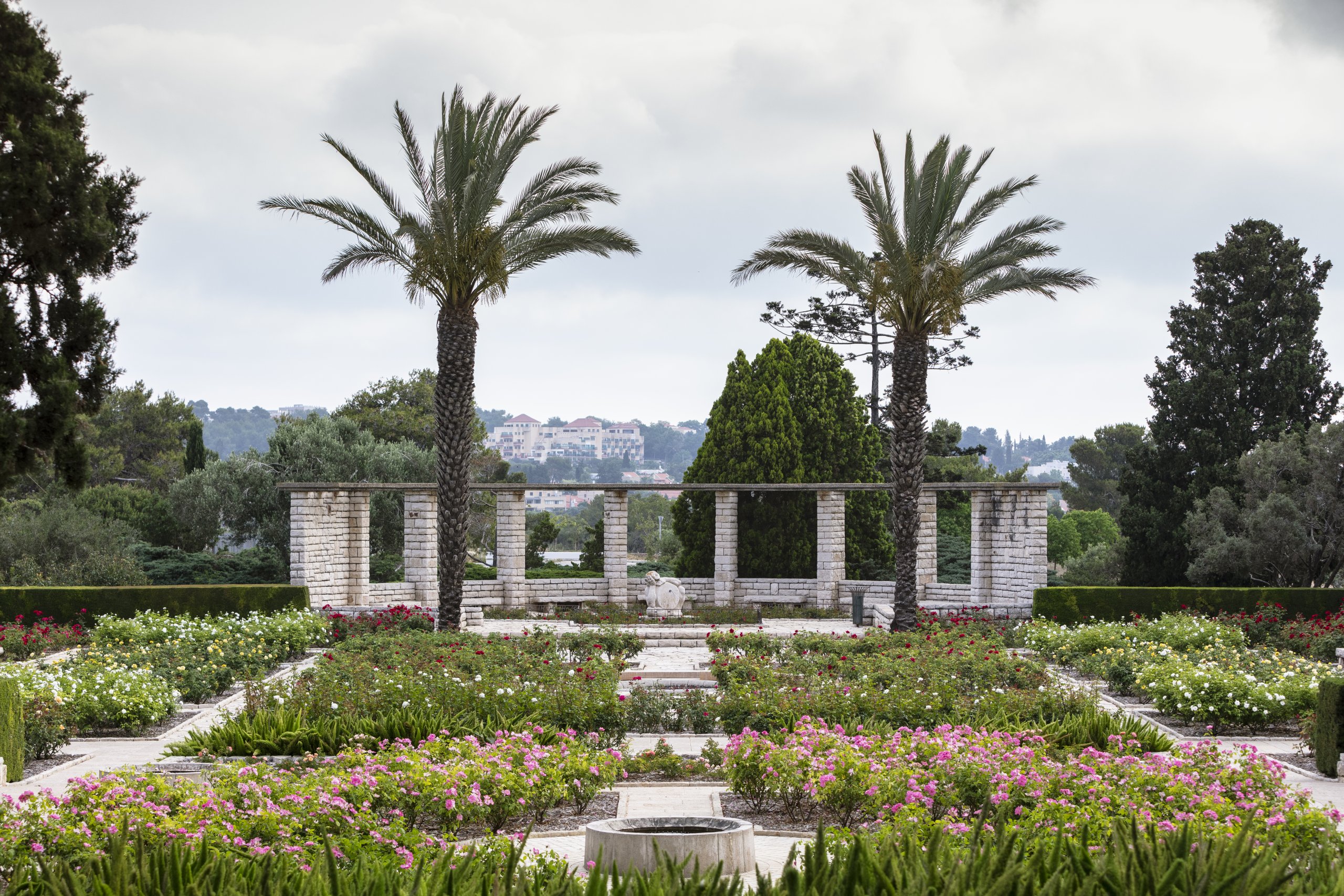
No need for a passport
‘It feels like being abroad’ – a comment heard often from visitors to Ramat Hanadiv. Was it really the intention of the planners to create a feeling of being abroad?
From the outset the intention was to establish beautiful, inspiring gardens. Indeed, the inspiration for the planning came partly from the European gardening culture (see for example the meticulous, symmetrical Rose Garden fashioned on the Versailles Gardens in France), but no conscious choice was made to create this feeling. It seems to have developed with time: from a great love of nature and vegetation, by virtue of the professional training in very meticulous gardening practices and thanks to a great appreciation for aesthetics and for the experience it creates. All of these are noticeable from every direction: from the standard of maintenance, through the meticulous cleanliness of the site and the exceptional standard of gardening, to the treatment of each visitor as a guest, and all of this without standing in line at the airport…
Any question? We will be glad to help